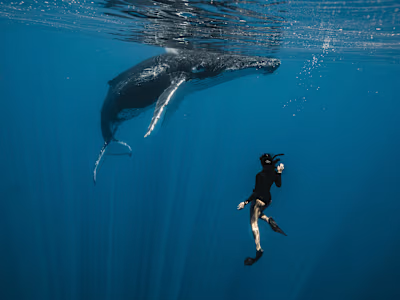The Case Against Boeing
A case studying following the highlights of the Boeing 737 Max crashes.
Introduction/Prelude
In recent years the result of two planes crashing from The Boeing Company has resulted in a crisis. The 737 Max was the newest version of Boeings well known 737 aircraft. This event led to the death of 346 people on Lion Air flight 610 and Ethiopian airlines flight 302. These brand-new planes crashed under very similar circumstances including good weather conditions, and a drop in altitude. Since the 737 Max had not been flying for very long, the initial cause of the accident was unknown. From the pre-crisis leading to the first crash in 2018 to the most recent information released in January 2021 post crisis, the truth behind this preventable crisis unraveled slowly effecting people across the globe.
Background on The Company/The Product
Before this crisis, the Boeing company was known for their accountability in the safety of their customers. Boeing was known for being proactive by putting safety first resulting in crisis prevention skills. A well-known slogan “If it aint Boeing, I aint going” (Beresnevicius, 2020) became very popular as Boeing continued to make trust and safety their number one priority as a company.
Explanation of the Case
In Jakarta Indonesia October 29th, 2018, Bhavye Suneja was the pilot of Lion Air flight 610 that crashed within minutes of take-off. After the initial accident, the cause would remain unknown until further evidence or the black boxes were found. Black boxes are a device “that would record not only flight data but also voices and other sounds in aircraft cockpits immediately prior to a crash” giving more information on the cause of crashes (Crescent, 2022). The modern-day black box gives insight on data like altitude, airspeed, direction, and what the throttles were doing. Each aircraft has angle of attack indicators on the left and right side at the nose of the plane. These sensors measure the nose of the planes position during a flight. The crash in Lion Air Flight 610 indicated that the left angle attack indicator had failed. The altitude was reading wrong, and the pilot had no control of the plane manually leading to a nosedive.
This 737 Max contained a program called Maneuvering Characteristics Augmentation System, MCAS for short. The new 737 Max planes had bigger engines, and engineers were scared that the bigger engine would cause the nose of the plane to rise too high. The job of the MCAS software was to lower the nose for 10 seconds allowing the plane to come to the right position again. But in the Lion Air flight 610 the angle of attack sensor showing where the nose placement was malfunctioning, so the MCAS assumed the plane needed to go down. So, the plane went down till it no longer could.
Even though the MCAS software was new to these pilots, Boeing stated “we try not to overload the crew with information that is unnecessary” (Kennedy, 2022) so extra training was not required by pilots. The credibility for the company was lost here as Boeing intentionally did not tell pilots about the MCAS software. After this information from the black box was released, people were angry. Pilots around the world felt disrespected by the company for proactively deciding it was unnecessary to tell the pilots about MCAS. As an investigation started to get to the bottom of the crash the CEO of Boeing, Dennis Muilenburg, would not comment on the investigation. The company evaded responsibility and had a chance to start the process of image repair at the beginning of the crisis but chose to keep quiet. Image restoration tells us that a company can “allege a lack of information about or control over important elements of the system” (Benoit, 1997). On the news he sent his dearest apologizes to the families and said he didn’t know what happened, but the problem was being investigated. This was not until May 2019 that he made this statement on an interview for KIRO 7 news station (KIRO, 2019). Behind the scenes there had been talk that if an American pilot were in the same situation as Bhavye Suneja from the Lion Air this crash would have never happened. Instead of taking responsibility the company, as well as the news, shifted the blame onto the airline. Lion Air had a reputation for being a low-cost airline and having a spotty safety record. They had been banned from flying in the United States and Europe. This led to blaming India for the country’s reputation. In October 2019 a year after the crash, a final report indicated that there was “some blame on the pilots and maintenance crews but concluded that Boeing and the FAA were primarily responsible for the crash” (Herket, 2020).
Even though the crisis overtook the media, Boeing still chose not to ground the 737 Max planes following the accident with Lion Air Flight 610. The company told the operators and pilots to trust them. Fast forward 19 weeks to March 10th, 2019, in Addis Ababa where Ethiopian Airlines Flight 302 in a 737 Max crashed into the ground. This flight happened under similar circumstances to the Lion air crash resulting in the death of 157 passengers and crew. No bodies were recovered from this incident and when people showed up to the site of the crash they found little to no debris. This was because the plane hit the ground at close to 500 miles an hour leaving nothing but a crater (Kennedy, 2022).
Analysis of the Case: Company and Public Reaction
The media was quick to share the news of Flight 302 with the whole world. The result of the news led to “all 737 Max planes grounded worldwide” (Herket, 2020) and the trust for Boeing was lost. At this point Boeing still claimed that these aircrafts were safe to fly but Australia, New Zealand, France, Germany, and many other countries took the matter into their own hands and decided to ground the planes. This was an effective way to stop any further crisis from occurring within their own countries. These countries demonstrated corrective action and crisis prevention while Boeing stayed quiet. In corrective action the company promises to correct the problem. By grounding the planes, no further damage would occur and prevention was the main priority (Benoit, 1997). America was one of the only countries who decided without data it would not be right to ground the planes. The Federal Aviation Administration (FAA) and Boeing said, “it is important to note that the federal aviation administration is not mandating any further action at this time” (Kennedy, 2022). Further evidence from the black boxes and evidence at the crash site would help give the world answers for why two new planes in the 21st century crashed within months of one another.
When the block boxes were discovered, Boeing was still off the hook under the FAA. At the crash site they found the jackscrew which stabilizes the aircraft. It was found that the jackscrew was in a completely nose down position. The crew on board followed the Boeing Flight Crew Operations Manual Bulletin that became aware to airlines after the Lion Air crash. This crew did the best they could but there was not anything manually they could do to stop the plane from going down. When the data came out America became the last country to ground the remaining 737 Max jets as President Trump said at the white house “we’re going to be issuing an emergency order of prohibition to ground all flight of the 737 Max” (Haslett, 2019). The countries and airlines put the safety of the public first and acted by grounding the planes.
At this time, The Boing Company still did not comment on the problem and was not providing any documents requested by congress. This was ineffective as Boeing once again shifted the blame onto the Ethiopian pilot like they acted towards the Lion Air pilot and crew. Shifting the blame is a form of denial that a company will use to take the responsibility off them (Benoit, 1997). Boeing wanted to remain innocent to the public. The company did not agree to any interviews when the initial accident occurred. It was not until June 4th, 2019, months after the second crash Dennis Muilenburg the CEO of Boeing did an interview with CNBC. In the interview Muilenburg stated that the crash was discovered to be a “supplier quality issue” and they were coordinating with the FAA to solve the problem (CNBC Television, 2019). In the interview Muilenburg repetitively states how safety and quality are their number one goals post crisis. He shows confidence when he states that these jets despite the crisis are still one of the safest planes the world has ever seen.
Pilots were blamed but the faulty design was up for question with the rest of the world. Thousands of documents were eventually released to congress. In these documents there was evidence showing that “Boeing employees held a meeting to discuss the MCAS system” with an end conclusion that the MCAS system had been questioned by Boeing itself since the beginning (Kennedy, 2022). The MCAS system and the planes design had been updated many times, but as new models came about, pilots were not trained to work with this new software. The FAA was kept out of the loop as much as the pilots, so they had no control over if the pilots should have received training or not. The Office of Public Affairs stated that “Boeing’s employees chose the path of profit over candor by concealing material information from the FAA concerning the operation of its 737 Max airplane” as well as covering up the deception even after catastrophic events (Office of Public Affairs, 2021). This fatal mistake caused the safety culture of the company to fall apart.
About 20 months after the initial black box findings, the 737 max plane was revised. The FAA approved Boeing to fly them again on November 18th of 2020 (Kennedy, 2022). In their statement for the return to service the FAA directly addressed the incident. Steve Dickson said, “during this time, FAA employees worked diligently to identify and address the safety issued that played a role in the tragic loss of 346 lives aboard Lion Air Flight 610 and Ethiopian Airlines Flight 302” (Federal Aviation Administration, 2021). The series of events in this crisis led to a 28-month long investigation. During this crisis the image of the Boeing Company was heavily effected, but the FAA was affected as well. The FAA oversees regulating safety procedures in aviation and with Boeing sweeping the 737 Max issues under the rug the FAA felt guilty of the accidents. The FAA addressed those who have been affected by the incident and demonstrated a good kevel of politeness and empathy throughout the investigation. The department of justice reached an agreement with Boeing at the end of the 28 months. Boeing agreed to pay over 2.5 billion because of the 737 Max fraud conspiracy to resolve criminal charges and defraud any correlation between the FAA and the evaluation of the 737 Max (Office of Public Affairs, 2021). The post crisis consequences were devastating for all the stakeholders. The CEO of the company Dennis Muilenburg was fired because of the two crashes. While renewal is an important stage in the process of rebuilding a company, Boeing demonstrated new core values by firing the CEO. The discourse of renewal tells us “To reconnect the past to the present, to rediscover the old in the new” will help a company recover from a crisis (Ulmer and Sellnow, 2002). This marked the new beginning for Boeing as the company is now in the repair and renewal stage post crisis.
Conclusion/The Outcome: Lessons Learned
as Lion Air flight 610 and Ethiopian airlines flight 203 killed 346 individuals, Boeing demonstrated poor reputation management. The company could of used bolstering as a method to show positivity towards the public eye, yet they chose to blame others and keep quiet. Image repair tells us that “instead of altering the nature of the accusations, the business may attempt to refocus attention on other issues” (Benoit, 1997). Boeing avoided taking responsibility and the CEO refocused the crisis on bad employees rather than blaming the company itself. The crisis could have been prevented if Boeing trusted the word of their engineers when someone believed that the MCAS was not safe. The company also could have used the time and money to train Pilots on the MCAS, so they were prepared to fly the 737 Max. This crisis was preventable if the foundation for safety and trust was steady for the company, airlines, employees, and all other stakeholders.
After the initial Lion Air crash, Boeing should have ground all the 737 Max planes to prevent further damage. They lacked crisis response by ignoring the questions presented by the media and shifted the blame. After the second crash Boeing still claimed to not know the cause and stood tall as they showed denial and claimed there was nothing wrong with the planes. This effected so many people from different countries, but Boeing did not even attempt to cater to the diverse cultures and audiences. They were barley helpful to their own people in America who were employees of Boeing or victims of the crisis or customers. There were no moral principles showed by Boeing. In this situation Boeing showed no ethical action as they knew the risks of uncertainty with MCAS but chose to ignore it. Looking at the rights approach, Boeing withheld the truth from stakeholders. The morals behind the action did not respect the morals of everyone (Velasquez, Andre, Shanks, & Meyer, 1996). Boeing did not take everyone into consideration. We can use this case as a teaching method to show the importance of putting safety first. The company thrived off safety and trust, but once deceitful behaviour was present crisis occurred. These simple factors are such a strong part of a healthy environment for a company. In the end, Boeing paid a lot more money for fines for the damage they caused then the money they saved by cutting corners. While prevention is better than a cure, Boeing can learn from this incident and not repeat the same mistake again.
WORD COUNT: 2,385
References
Benoit, W. L. (1997). Image Repair Discourse and Crisis Communication. Public Relations Review.
Beresnevicius, R. (2020, July 8). If it ain't Boeing – I ain't going. the iconic Boeing 707 story. Aero Time Hub.
Federal Aviation Administration. (2021, April). FAA updates on Boeing 737 MAX. FAA Updates on Boeing 737 MAX | Federal Aviation Administration.
Haslett, C. (2019, March 14). Trump announces FAA grounding all Boeing 737 MAX 8 and MAX 9 planes in US after Ethiopia crash. ABC News.
Herket, J. (2020, July 10). The Boeing 737 MAX: Lessons for Engineering Ethics.
Imagine Documentaries, Imagine Entertainment, Moxie. (2022). Downfall The Case Against Boeing.
Investigators Probe Software's Role in Deadly Boeing 737 Max Crashes (2019). NPR.
KIRO 7 News Seattle. (2019). Boeing CEO to give first interview since 737 Max 8 crashes. KIRO 7 News Seattle. https://www.kiro7.com/news/local/only-on-kiro-7-boeing-ceo-to-give-first-interview-since-737-max-8-crashes/953395430/.
National Museum of Australia; Lawson Crescent, A. P. (2022, September 28). Black Box Flight Recorder invented. National Museum of Australia.
Nowlin, M. (2021, March 10). Boeing’s 737 MAX aircraft and the crash of Ethiopian Airlines Flight 302: Explained through graphics. Seattle Times. cartoon.
Office of Public Affairs. (2021, January 7). Boeing charged with 737 max fraud conspiracy and agrees to pay over $2.5 billion. The United States Department of Justice.
Ulmer, R. R., & Sellnow, T. L. (2002). Crisis Management and the Discourse of Renewal: Understanding the Potential for Positive Outcomes of Crisis.
Velasquez, M., Andre, C., Shanks, T., & Meyer, M. J. (1996). Thinking Ethically: A Framework for Moral Decision Making, (Issues of Ethics).
YouTube. (2019). Boeing CEO Dennis Muilenburg on 737 Max crisis. YouTube. https://www.youtube.com/watch?v=Yak6ahA_zgU.
Like this project
Posted Dec 21, 2022
A case studying following the highlights of the Boeing 737 Max crashes.
Likes
0
Views
16






